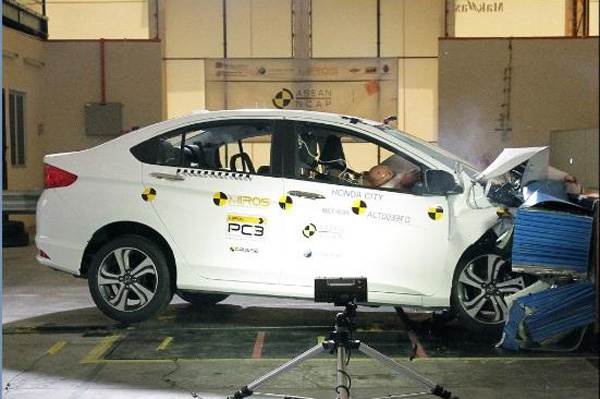Who is NCAP?
The New Car Assessment Programme, or NCAP, is an autonomous organization that tests vehicles for safety, and publishes ratings for each vehicle based on how they performed in these tests. The purpose of the organization is to spread awareness among consumers, so that they can make an informed choice while buying a new car.
Earlier this year, Global NCAP crash-tested the Maruti Suzuki Alto 800, Tata Nano, Ford Figo, Hyundai i10 and Volkswagen Polo in India. The Figo and the Polo were the only ones which had stable frames, while the others failed the tests completely. Recently they tested the Maruti Suzuki Swift and Datsun Go, both of which failed the tests.
What are the crash tests they perform?
The main objective of these tests is to understand the ‘what’ and ‘how’ of injury sustained by the occupants in the event of the crash, thus rating the level of safety that the car provides. The human body is replicated with crash-test dummies, which are loaded with sensors. The dummy is sized like an average adult, or a small child to tests the level of injury sustained by a real life one. After the test is performed, the readings from the sensors are taken into account to predict the level of injury that might be sustained in a real-life crash.
In India, Global NCAP follows norms which are very similar to the ones used in Europe while testing the safety of cars. They perform a frontal offset test and a side impact test with the cars. The front offset collision test is performed at a speed of 64kph. The obstacle is a barrier which replicates the front end of another car. It is placed at a 40 percent offset, meaning that it covers 40 percent of the car's width. While this might seem an unconventional setup, most fatal accidents that take place in the real world, occur in this configuration.
The side impact tests are set up with a trolley moving at a speed of 40kph. The center point is the place where the hip of the driver would be. The trolley hits the vehicle just above the door sill area. This is meant to mimic another car smashing into the car from the side.
How is the score decided?
The scoring is done based on the level of injury sustained by the occupants, in our case, the crash-test dummy. The Adult Occupant Protection is rated on a scale of 0-16 (where 16 is the safest), and child occupants, where the child is protected by a Child Restraint System. The stars are awarded based on a percent compliance scale, where 100 percent is the best. The importance of airbags, ABS and structural integrity is also clearly demonstrated with the readings from the crash-test-dummy.
Are these tests relevant to India?
India has one of the world’s worst road safety – in our driving environment, many come into play, which these tests don't really account for, but these tests are still significant.
The purpose of these NCAP tests is to educate buyers about the basics about the crash worthiness of their cars, and for that they are invaluable.
How much importance should you attest to the Global NCAP score?
While what really needs to change is the mindset of drivers, and an increase in the effort from the government authorities to enforce the law, the ratings from the Global NCAP should be paid heed to. It is an important indication of how safe a car truly is in case it is involved in a crash – different configurations while crash-testing broadly cover a variety of real-life crashes, and cannot be taken lightly. It is always wise to buy oneself a car that passed these tests with decent scores, than one which didn’t score at all. However, remember, that European cars will have a slight advantage, as they are built to higher standards to pass similar and more difficult tests in the first place.
Arpit Phillips



Comments
Member Login
Personal Details
No comments yet. Be the first to comment.